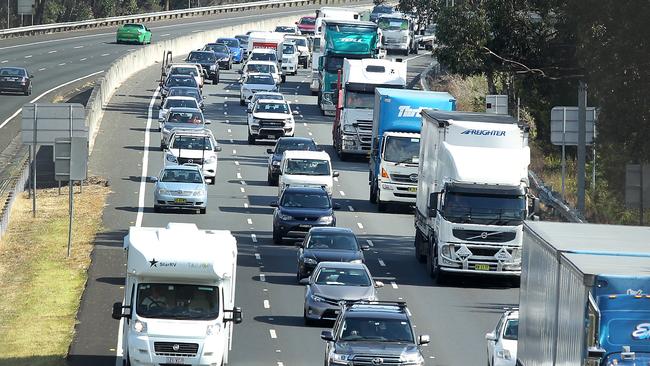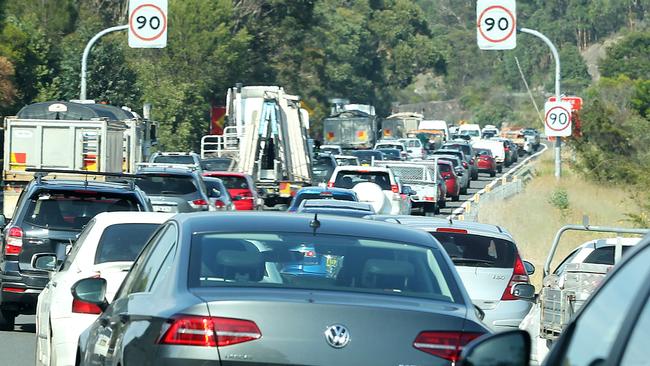Congestion will cost Sydney more than $15 billion a year by 2031
A huge list of transport infrastructure projects won’t be enough to save Sydneysiders from the daily grind, with even greater delays awaiting commuters by 2031, a new audit has revealed. SEE THE LIST OF WORST ROADS.
NSW
Don't miss out on the headlines from NSW. Followed categories will be added to My News.
Road congestion will cost Sydney more than $15 billion a year by 2031 despite an “unprecedented” pipeline of transport projects aimed at slashing commute times.
Overcrowded public transport, slow moving freight and longer peak time commutes will hurt productivity in Greater Sydney, Newcastle and Wollongong, according to the 2019 Infrastructure Australia audit released today.
By 2031 the region will be home to five of Australia’s 10 worst roads for congestion — down from eight in 2016 — with the Artarmon to Sydney Harbour Tunnel via the Gore Hill and Warringah Freeways the worst in the country.

MORE NEWS
EELS STAR SHAUN LANE IN WHITE POWDER PHOTO PROBE
MINISTER ‘MISUSED RESOURCES’ IN ABORTION DEBATE
The most delay affected roads during morning peak time in the next ten years will be the south bound Central Coast to Sydney M1 corridor, east bound Liverpool to Sydney Airport on the M5 and north bound South Coast to Sydney on the A1.
Delays on these three commutes alone is estimated to cost the economy $661,000 a day.
Meanwhile the cost of public transport overcrowding is expected to go from $68 million in 2016 to a massive $223 million in 2031.
Infrastructure Australia found even giving buses priority road space won’t be enough to ease pressures as overcrowding means it takes longer for people to get on and off, reducing efficiency.
“Anecdotal evidence suggests that on some of Sydney’s busiest bus corridors the high patronage of bus services is resulting in on-board congestion — or overcrowding — leading to discomfort for passengers and late-running services,” the report said.
The soaring costs of congestion comes despite the “historically unprecedented” 97 new and ongoing projects taken into account by Infrastructure Australia, including the WestConnex, NorthConnex, Sydney metros in the northwest, city and southwest, Newcastle Light Rail and Western Sydney Airport road network.
The report found “the end of the traffic jam” would have moved further out from each city centre as housing and employment locations disperse.
“By 2031, it will be much more common for peak congestion to be encountered in both directions on Sydney’s major routes, as employment grows in northwestern and southwestern Sydney,” the report said.
Population, Cities and Urban Infrastructure Minister Alan Tudge said the Federal Government had further cut the migration rate and invested in road infrastructure since the audit was conducted.
“While the congestion modelling does not take into account our recent significant infrastructure and population measures, it does highlight the importance of continuing our congestion busting program,” he said.

NRMA spokeswoman Bridget Ahern said current infrastructure projects would go a “long way” to improving quality of life for residents, but even more investment was needed to “future proof” the state.
“Addressing mobility and congestion in a nation as urbanised as Australia is paramount and nowhere is that playing out more than in Sydney,” she said.
“We also can’t forget regional communities who in recent times have been left behind.”
Labor’s infrastructure spokeswoman Catherine King said the report proved more congestion-busting investment was needed in fast growing areas, including Sydney.
“The audit is another stark reminder of the real pressures in the system now,” she said.
